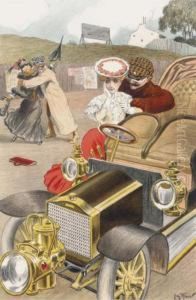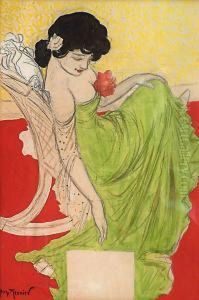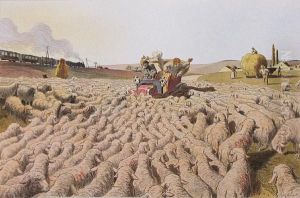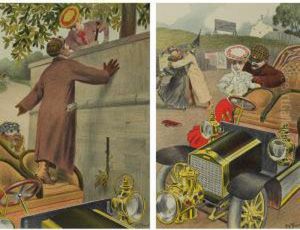Georges Meunier Paintings
Georges Meunier was a notable French graphic artist, illustrator, and poster designer born in 1869. He was part of the Belle Époque period, a time characterized by optimism, regional peace, economic prosperity, and technological, scientific, and cultural innovations in Europe, which lasted from the late 19th century until the beginning of World War I. Meunier was among the group of artists who contributed to the rich culture of poster art that flourished during this time in Paris, alongside other famous names like Jules Chéret, Henri de Toulouse-Lautrec, and Alphonse Mucha.
Meunier's work is characterized by its vibrant color palette, clear compositions, and often a touch of humor. He created posters for a wide range of subjects, including advertisements for products, promotions for theatrical productions, and travel posters. His style was influenced by the Art Nouveau movement, which was prevalent during his career, and he often incorporated its signature flowing lines and floral motifs into his designs. Meunier's posters were not just commercial advertisements but also considered works of art, contributing to the recognition of poster art as a legitimate art form.
Despite his significant contribution to the art world during his lifetime, Georges Meunier is not as widely recognized today as some of his contemporaries. Nevertheless, his work remains an important part of the history of graphic design and the poster art movement of the late 19th and early 20th centuries. Meunier's illustrations and posters can still be found in collections and museums, offering a glimpse into the vibrant cultural life of Belle Époque Paris. Georges Meunier passed away in 1942, leaving behind a legacy of art that continues to be appreciated for its historical value and aesthetic appeal.




